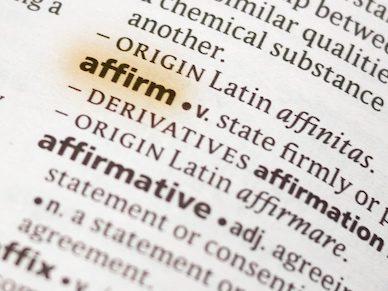“Google attempted to argue that its originally-accused products did not infringe the five patents at issue because Sonos’ infringement allegations relied on ‘features or steps that are added or performed by users after Google imports the devices into the United States’…. But the CAFC said the court has already rejected that argument.”
 The U.S. Court of Appeals for the Federal Circuit (CAFC) on Monday affirmed an International Trade Commission (ITC) final determination that said Google infringed five of Sonos, Inc.’s patents but which also found three proposed redesigns did not infringe.
The U.S. Court of Appeals for the Federal Circuit (CAFC) on Monday affirmed an International Trade Commission (ITC) final determination that said Google infringed five of Sonos, Inc.’s patents but which also found three proposed redesigns did not infringe.
Sonos owns U.S. Patent Nos. 10,439,896 (“’896 patent”), 9,195,258 (“’258 patent”), 9,219,959 (“’959 patent”), 10,209,953 (“’953 patent”), and 8,588,949 (“’949 patent”). Sonos filed a complaint with the ITC alleging certain Google audio players and controllers infringed the patents and the ITC agreed, issuing a limited exclusion order and a cease-and-desist order (CDO) preventing Google from marketing the infringing products in the United States, and set a 100% bond for any importations of infringing products by Google during the period of Presidential review. However, the ITC’s Chief Administrative Law Judge said that certain non-infringing alternatives (NIAs) proposed by Google avoided infringement. Sonos appealed the finding on non-infringement by the NIAs and Google cross-appealed the finding of infringement by the originally-accused products.
In the CAFC’s opinion, authored by Judge Stark, the court first explained that the ITC’s finding with respect to the NIAs was supported by substantial evidence. The ITC found that the NIAs do not infringe the ’896 patent, ’258 patent and ’959 patents because:
1) claim 1 of the ‘896 patent requires “transmission of at least one single ‘second message’ containing both the claimed ‘identifier” and the claimed ‘security key,’” whereas in Google’s redesigned ’896 NIA 2, “the identifier and the security key are transmitted in two separate messages”;
2) the ‘258 patent claims “a technique for synchronizing smart speakers with each other by transmitting ‘clock time information’” meaning “information representing a time value indicated by a device’s clock,” whereas the ’258 NIA 1 uses an “incrementing counter” and does not represent a time value so cannot be the claimed clock time information; and
3) the Commission’s construction of the term “equalization” in claim 10 of the ‘959 patent was correct and that, under that narrower construction, the ‘959 NIA 4 did not infringe.
As to Google’s cross-appeal of the Commission’s finding that the ‘896 and ‘949 patents were infringed by the originally-accused products, the CAFC similarly agreed with the Commission’s findings, which included reliance on Google’s expert testimony to support that the accused product perform the claimed steps of the ‘896 patent and therefore infringe. Google also challenged the Commission’s finding that it failed to prove that the challenged claims of the ’896 patent are invalid as obvious over the prior art system, but the CAFC affirmed the ITC’s analysis and said the claims of the ‘896 patent are valid over the relevant prior art.
Turning to the ‘949 patent, which covers “techniques allowing both collective and individual adjustment of the volumes of players within a group,” Google relied on the prosecution history to argue that Sonos broadly disclaimed all “tethered or interdependent operation.” But since “[t]he party seeking to invoke prosecution history disclaimer bears the burden of proving the existence of a clear and unmistakable disclaimer that would have been evident to one skilled in the art,” the court agreed that the prosecution history statements provided did not meet this standard. And since Google did not offer another argument for non-infringement, the CAFC affirmed the ITC’s finding.
Lastly, Google attempted to argue that its originally-accused products did not infringe the five patents at issue because Sonos’ infringement allegations relied on “features or steps that are added or performed by users after Google imports the devices into the United States” and therefore district court would be the proper forum for Sonos’ claims. But the CAFC said, and Google conceded, that the court has already rejected that argument in Suprema, Inc. v. Int’l Trade Com’n, 796 F.3d 1338 (Fed. Cir. 2015) (en banc). In that case, the court said:
“Section 337 contemplates that infringement may occur after importation. The statute defines as unlawful ‘the sale within the United States after importation . . . of articles that—(i) infringe . . . .’ The statute thus distinguishes the unfair trade act of importation from infringement by defining as unfair the importation of an article that will infringe, i.e., be sold, ‘after importation.’ Section 337(a)(1)(B)’s ‘sale. . . after importation’ language confirms that the Commission is permitted to focus on post-importation activity to identify the completion of infringement.”
Thus, said the CAFC, the court is bound by that precedent.
Image Source: Deposit Photos
Author: sharafmaksumov
Image ID: 229492118

![[IPWatchdog Logo]](https://ipwatchdog.com/wp-content/themes/IPWatchdog%20-%202023/assets/images/temp/logo-small@2x.png)

![[Advertisement]](https://ipwatchdog.com/wp-content/uploads/2024/04/UnitedLex-May-2-2024-sidebar-700x500-1.jpg)
![[Advertisement]](https://ipwatchdog.com/wp-content/uploads/2024/04/Patent-Litigation-Masters-2024-sidebar-700x500-1.jpg)

![[Advertisement]](https://ipwatchdog.com/wp-content/uploads/2021/12/WEBINAR-336-x-280-px.png)
![[Advertisement]](https://ipwatchdog.com/wp-content/uploads/2021/12/2021-Patent-Practice-on-Demand-recorded-Feb-2021-336-x-280.jpg)
![[Advertisement]](https://ipwatchdog.com/wp-content/uploads/2021/12/Ad-4-The-Invent-Patent-System™.png)






Join the Discussion
No comments yet. Add my comment.
Add Comment